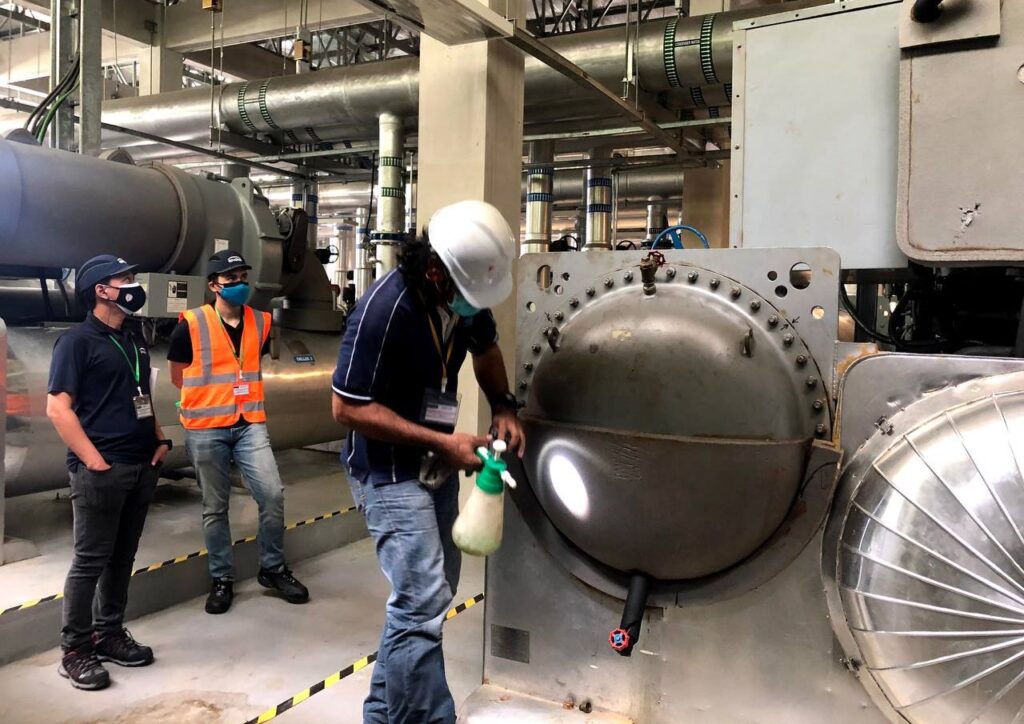HOW DISTRICT COOLING CONTRIBUTES TO SUSTAINABILITY AND ENERGY EFFICIENCY
District cooling systems are becoming increasingly popular in urban areas around the world. These systems allow for a centralized cooling source that can serve multiple buildings or even entire districts, resulting in significant energy savings and reduced environmental impact. Urban areas which mostly are densely populated and characterized by a high concentration of buildings, infrastructure, and economic activities really need a reliable air conditioning system as the cities natural land cover are replace with dense concentrations of pavement, buildings, and other surfaces that absorb and retain heat.
We can see the contribution by going through the concept of district cooling. Unlike conventional cooling systems, which rely on individual air conditioning units in each building, district cooling systems use a centralized plant to produce chilled water that is then distributed through a network of pipes to buildings in the area. The chilled water is used to cool the air inside buildings with the help of buildings’ Air Handling Unit (AHU), resulting in a more efficient and cost-effective cooling solution as no operation cost incurred to generate the chilled water.

One of the main benefits of district cooling is that it reduces the overall energy consumption of the buildings it serves. Because the cooling is provided by a centralized plant, the system can be optimized for energy efficiency, resulting in lower overall energy usage. This is particularly important in hot climates, where air conditioning can account for a significant portion of a building’s energy consumption. By depending on district cooling, excessive energy consumption by air conditioning can be reduce as less amount of equipment will be operated as district cooling is utilized.
In addition to reducing energy consumption, district cooling also has a lower environmental impact than conventional cooling methods. The centralized plant can use more sustainable energy sources, such as renewable energy or waste heat from industrial processes, to produce the chilled water. Most centralized cooling plant have adapted the system where the energy derivations are obtained from renewable energy sources. This reduces the reliance on fossil fuels and reduces greenhouse gas emissions.
Another benefit of district cooling is that it can be more reliable than conventional cooling systems. Because the system is centralized, maintenance and repairs can be done more efficiently, with less disruption to the buildings it serves. The maintenance is done periodically and were conducted by a technical team which are specifically trained to run maintenance at centralized cooling plant. This can result in fewer breakdowns and a more consistent cooling experience for building occupants.

Apart from that, district cooling can also be more cost-effective for building owners and operators. Because the system is shared among multiple buildings, the cost per unit of cooling can be lower than with conventional air conditioning units. Conventional air conditioning units’ maintenance usually are not conducted at the same time, therefore conventional air conditioning unit’s user need to allocate time and funds regularly every year for maintenance whereas district cooling maintenance as a whole system can be done at the same time. In addition, the centralized system can be more easily monitored and optimized for efficiency, resulting in lower operating costs over time.
District cooling is a key technology that contributes to sustainability and energy efficiency, particularly in urban areas with a high concentration of buildings. By reducing overall energy consumption, using more sustainable energy sources, and providing a more reliable and cost-effective cooling solution, district cooling can help reduce the environmental impact of urban areas while also improving the bottom line for building owners and operators.
Throughout Megajana’s more than 20 years of experience providing district cooling services in Cyberjaya City, we have always prioritized energy efficiency and sustainability as the guiding principles of our work.
Contact us here to find out more about district cooling.